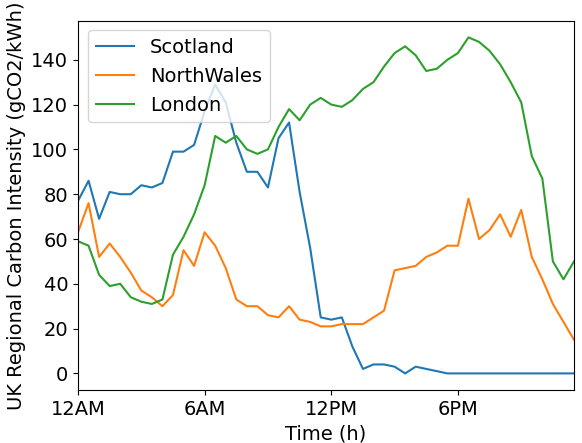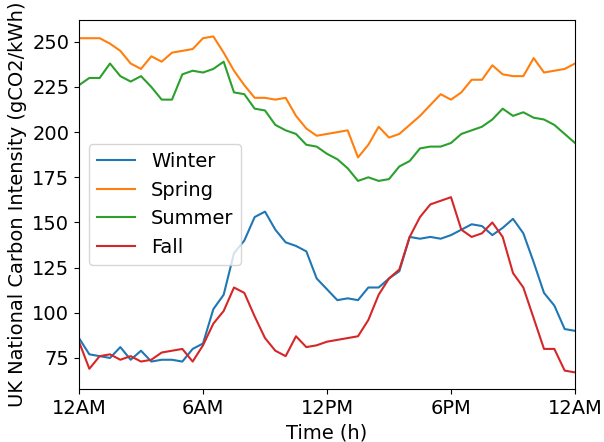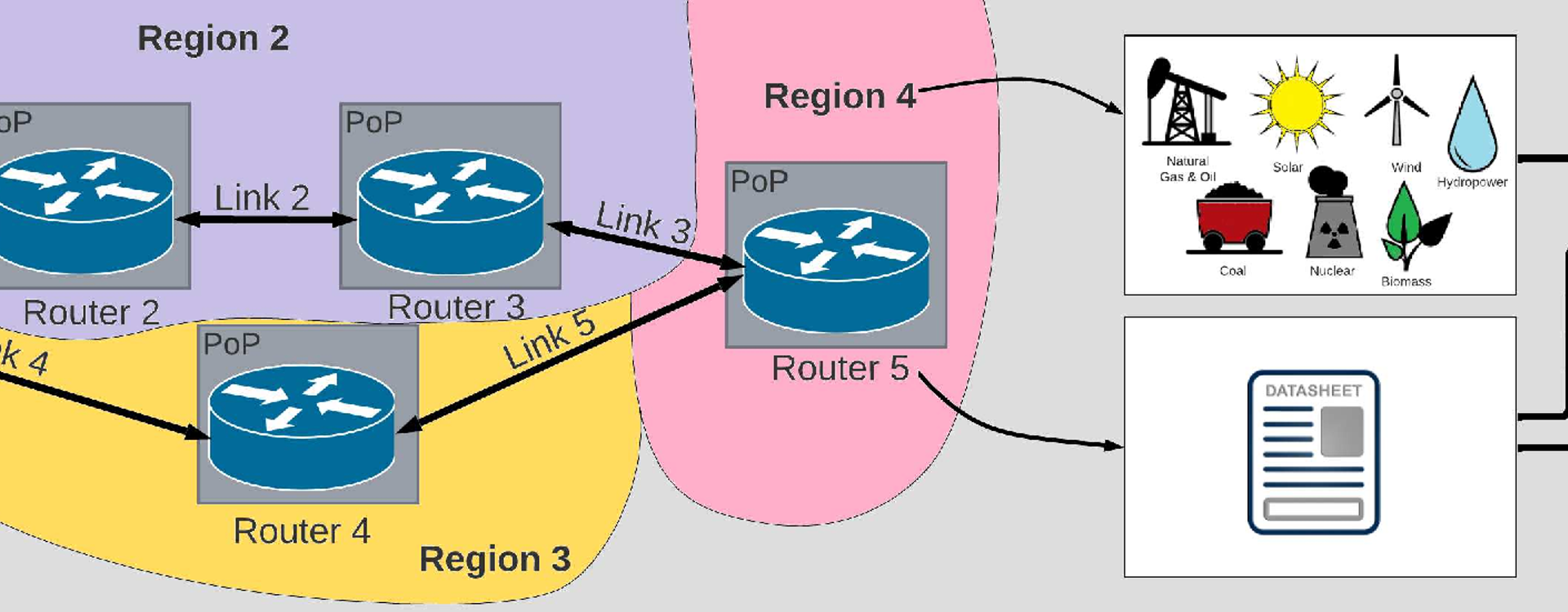Exploring the Benefits of Carbon-Aware Routing - University of Oxford
Work by Sawsan El Zahr, Paul Gunning and Noa Zilberman
Awarded IRTF Applied Networking Research Prize 2024
With the 2050 net-zero carbon goals, the Internet needs to reduce its carbon emissions too.
We address the scope 2 emissions associated with routing (indirect emissions from the energy consumed by networks), which go beyond reducing energy consumption. When considering the source of energy used by identical devices, carbon emissions will vary depending on their location and the time of measurement. The figure below shows the variation of carbon intensity (the weighted carbon emissions due to the consumption of 1 kWh) in the UK. This metric varies per day, per season and per region.


In this work we explored the potential benefits of introducing carbon awareness to routing. We defined a set of energy- and carbon-related metrics and integrated them into routing. The figure below is an overview diagram of the system and the metrics used.

In addition, we introduced CATE, a Carbon-Aware Traffic Engineering approach. It changes link costs based on energy- and carbon-related metrics and then further shuts down under-utilized links in a given topology. This approach was evaluated in simulation using ns-3 on two network topologies: British Telecom (BT) in the UK, and GEANT in Europe. Different traffic patterns were considered as well.
Results of the work show that the best metrics to use are a combination of the dynamic power of routers and regional carbon intensity. It further enforces that the idle power of routers has a major contribution to carbon emissions, and that simply changing the routing in a network will not suffice unless routers are improved and become more power proportional. Moreover, simulation results show that traditional any-to-any network traffic can be optimized with this approach, while streaming videos pose a greater challenge with minimum ability to optimize give the location of caches closer to the user. It therefore goes to show that application-specific solutions will be needed to truly green the Internet.

